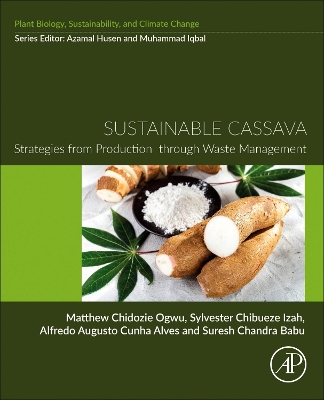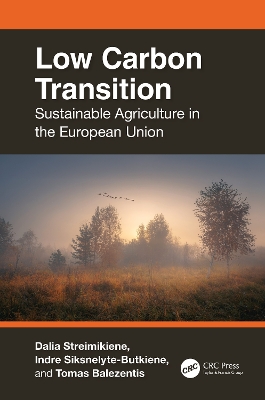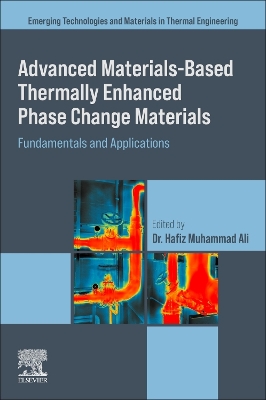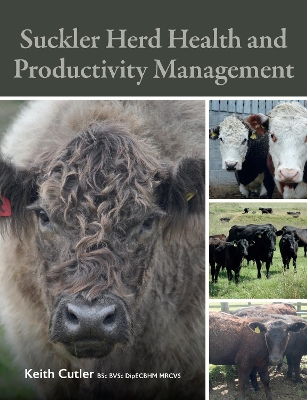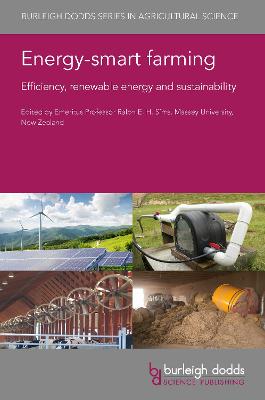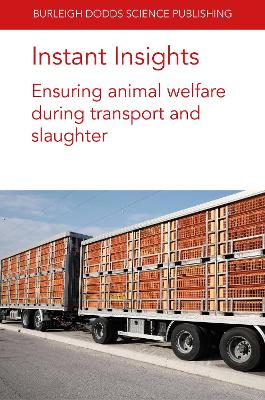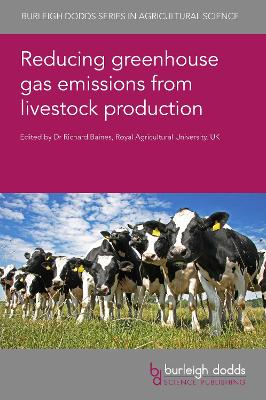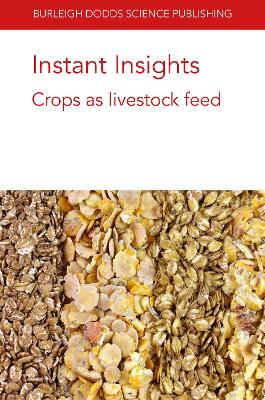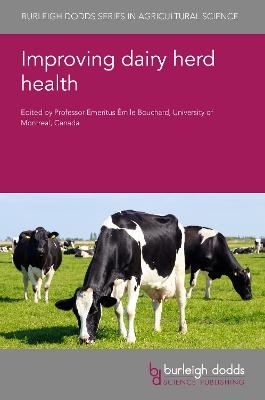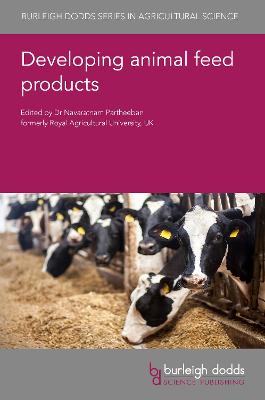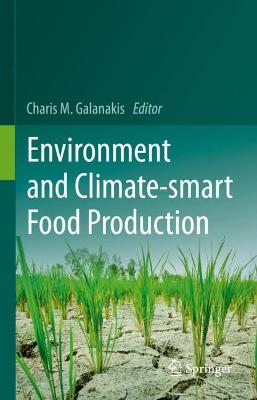Instant Insights: Improving the Sustainability of Dairy Production
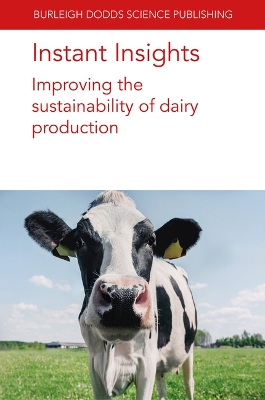 portes grátis
portes grátis
Instant Insights: Improving the Sustainability of Dairy Production
Groot Koerkamp, P. W. G.; Terry, Dr Stephanie A.; M. Romero, Dr Carlos; V. Chaves, Dr Alex; Shalloo, Dr Laurence; Bertrand, Ms Sophie; De Boer, I. J. M.; Upton, Dr J.; Murphy, M.; Murphy, E.
Burleigh Dodds Science Publishing Limited
09/2024
122
Mole
9781801466691
Pré-lançamento - envio 15 a 20 dias após a sua edição
1 Introduction
2 A global typology of dairy production systems for use in environmental assessments
3 Life cycle assessment (LCA): an overview
4 LCA: product carbon footprint
5 LCA: product water footprint
6 Assessing impacts on biodiversity
7 Setting environmental targets: challenges and limits
8 Conclusion
9 Where to look for further information
10 References
Chapter 2 - Improved energy and water management to minimize the environmental impact of dairy farming: J. Upton, E. Murphy and L. Shalloo, Teagasc, Ireland; M. Murphy, Cork Institute of Technology, Ireland; and I.J.M. De Boer and P.W.G. Groot Koerkamp, Wageningen University, The Netherlands;
1 Introduction
2 Understanding current energy use in dairy farming
3 Strategies to reduce energy use in dairy farming
4 Results, analysis and recommendations
5 Sustainable water use in dairy production
6 Conclusions: the relevance of energy reduction and water management strategies to dairy farm sustainability
7 Where to look for further information
8 References
Chapter 3 - Nutritional factors affecting greenhouse gas production from ruminants: implications for enteric and manure emissions: Stephanie A. Terry, Agriculture and Agri-Food Canada, Canada and University of Sydney, Australia; Carlos M. Romero, Agriculture and Agri-Food Canada and University of Lethbridge, Canada; and Alex V. Chaves and Tim A. McAllister, Agriculture and Agri-Food Canada, Canada;
1 Introduction
2 Case study: Dried distillers grains plus solubles (DDGS)
3 Nitro-based compounds
4 Plant secondary compounds
5 Carbon-derived materials
6 Microbial hydrogen utilisation
7 Future trends and conclusion
8 Where to look for further information
9 References
Chapter 4 - Host-rumen microbiome interactions and influences on feed conversion efficiency (FCE), methane production and other productivity traits: Elie Jami, Agricultural Research Organization - Volcani Center, Israel; and Itzhak Mizrahi, Ben-Gurion University of the Negev, Israel;
1 Introduction
2 Core community, resilience and natural variation in rumen microbiome composition
3 Microbiome-dependent traits
4 Methane production
5 Nitrogen compounds: utilization and emission
6 Microbiome and host genetics
7 References
Chapter 5 - Developing closed-loop dairy value chains and tools to support decision-makers: Jack B. Hetherington, University of Adelaide/CSIRO Agriculture and Food/Fight Food Waste Cooperative Research Centre, Australia; Pablo Juliano, CSIRO Agriculture and Food, Australia; and Rodolfo Garcia-Flores, CSIRO Data61, Australia;
1 Introduction
2 Frameworks for identifying and managing food loss and waste in developed dairy chains
3 Key stages and management practices for reducing food loss and waste in dairy chains
4 Improving decision-making in managing food loss and waste in dairy value chains
5 Conclusion
6 Acknowledgements
7 Where to look for further information
8 References
1 Introduction
2 A global typology of dairy production systems for use in environmental assessments
3 Life cycle assessment (LCA): an overview
4 LCA: product carbon footprint
5 LCA: product water footprint
6 Assessing impacts on biodiversity
7 Setting environmental targets: challenges and limits
8 Conclusion
9 Where to look for further information
10 References
Chapter 2 - Improved energy and water management to minimize the environmental impact of dairy farming: J. Upton, E. Murphy and L. Shalloo, Teagasc, Ireland; M. Murphy, Cork Institute of Technology, Ireland; and I.J.M. De Boer and P.W.G. Groot Koerkamp, Wageningen University, The Netherlands;
1 Introduction
2 Understanding current energy use in dairy farming
3 Strategies to reduce energy use in dairy farming
4 Results, analysis and recommendations
5 Sustainable water use in dairy production
6 Conclusions: the relevance of energy reduction and water management strategies to dairy farm sustainability
7 Where to look for further information
8 References
Chapter 3 - Nutritional factors affecting greenhouse gas production from ruminants: implications for enteric and manure emissions: Stephanie A. Terry, Agriculture and Agri-Food Canada, Canada and University of Sydney, Australia; Carlos M. Romero, Agriculture and Agri-Food Canada and University of Lethbridge, Canada; and Alex V. Chaves and Tim A. McAllister, Agriculture and Agri-Food Canada, Canada;
1 Introduction
2 Case study: Dried distillers grains plus solubles (DDGS)
3 Nitro-based compounds
4 Plant secondary compounds
5 Carbon-derived materials
6 Microbial hydrogen utilisation
7 Future trends and conclusion
8 Where to look for further information
9 References
Chapter 4 - Host-rumen microbiome interactions and influences on feed conversion efficiency (FCE), methane production and other productivity traits: Elie Jami, Agricultural Research Organization - Volcani Center, Israel; and Itzhak Mizrahi, Ben-Gurion University of the Negev, Israel;
1 Introduction
2 Core community, resilience and natural variation in rumen microbiome composition
3 Microbiome-dependent traits
4 Methane production
5 Nitrogen compounds: utilization and emission
6 Microbiome and host genetics
7 References
Chapter 5 - Developing closed-loop dairy value chains and tools to support decision-makers: Jack B. Hetherington, University of Adelaide/CSIRO Agriculture and Food/Fight Food Waste Cooperative Research Centre, Australia; Pablo Juliano, CSIRO Agriculture and Food, Australia; and Rodolfo Garcia-Flores, CSIRO Data61, Australia;
1 Introduction
2 Frameworks for identifying and managing food loss and waste in developed dairy chains
3 Key stages and management practices for reducing food loss and waste in dairy chains
4 Improving decision-making in managing food loss and waste in dairy value chains
5 Conclusion
6 Acknowledgements
7 Where to look for further information
8 References

